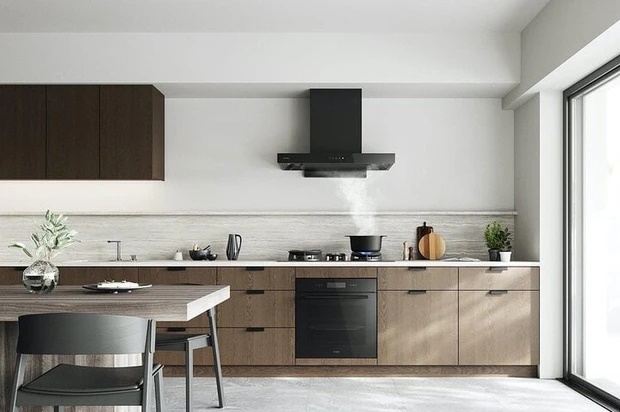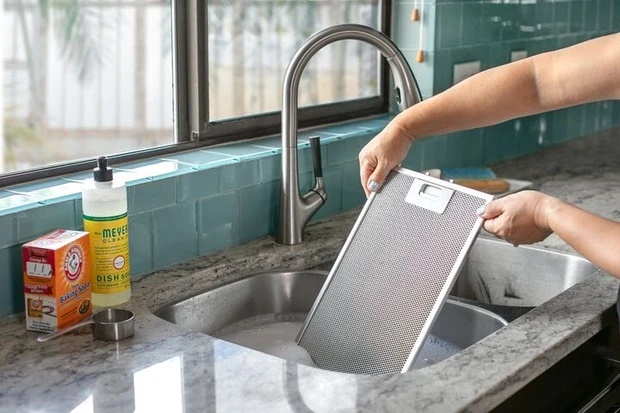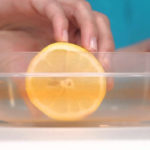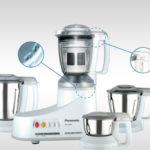Cooking processes produce a lot of smoke and food odors, and an exhaust hood is installed in the kitchen to address this issue. However, many people are still unsure whether to close or open the kitchen door when turning on the exhaust hood, and how the status of the doors affects the effectiveness of the hood.
Should you close or open the kitchen door when turning on the exhaust hood?
While using the exhaust hood, you should not open the kitchen door or windows as this will affect the operation of the hood. If you open the door, the air will create a counter-current that pushes smoke and food odors out of the house instead of focusing on the suction of the hood, resulting in inefficient operation.
In addition, frequently opening the door while using the exhaust hood will cause surfaces in the kitchen such as walls, stoves, and the hood itself to be covered in grease, making kitchen cleaning difficult.

The question of whether to close or open the kitchen door when turning on the exhaust hood is a concern for many people. (Photo: Fujioh)
However, you should not close all the kitchen doors and windows when using the exhaust hood for cooking, as this will create a “negative pressure zone” in the kitchen, preventing the hood from fully suctioning smoke. The remaining grease smoke in the house can have negative effects on the health of the entire family. The grease smoke can also stick to your clothes, making you feel uncomfortable.
Therefore, when cooking, you should partially open a window or the kitchen door to prevent too much outdoor air from entering while maintaining air circulation in the kitchen, helping the hood to work more effectively and preventing grease build-up.
After cooking and turning off the exhaust hood, you should open all the kitchen doors and windows to create air circulation in the house, dispersing harmful substances in the kitchen.
Tips for cleaning grease on the exhaust hood
To clean the exhaust hood, follow these steps:
– Remove the stainless steel and filter plates from the exhaust hood.
– Prepare a large pot of boiling water, add about 300ml of white vinegar, a little dishwashing liquid, and 5 tablespoons of baking soda, stir well. Depending on the thickness of the grease on the stainless steel plates, you can increase the amount of dishwashing liquid and baking soda.

Soak the exhaust hood filters in the cleaning solution. (Photo: Thekitchn)
– Place the filter plates in a basin, pour the boiling solution on them and soak for at least 2 hours, then scrub.
– Pour boiling water on the cleaned filter plates and use a small brush to scrub in all the corners.
– Use a damp cloth to wipe the inside and outside of the exhaust hood. You can use lemon juice or white vinegar to make the stainless steel surfaces shine and also to blur any light scratches on the surface.
Cleaning the exhaust hood with turnip greens
Instead of removing the old and less delicious parts of turnip greens, you can use them to clean the grease on the exhaust hood by following these steps:
– Pour one tablespoon of laundry detergent and one tablespoon of white vinegar into a spray bottle. Laundry detergent has good grease removing properties. Vinegar helps soften dirt for easier cleaning during the cleaning process.
– Add an appropriate amount of water to the bottle, shake well to dissolve the detergent and vinegar.
– Spray the solution on the grease spots, wait for 3-5 minutes for the solution to permeate and dissolve the stains.
– Rub the turnip greens over the grease spots a few times.
– Use a cloth to wipe away any remaining solution on the surface.
By VTC News



































